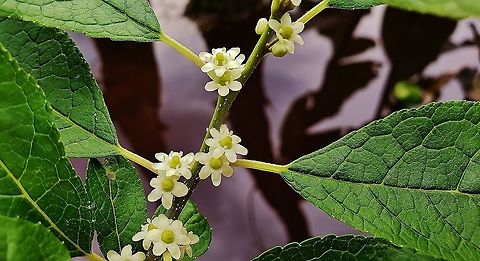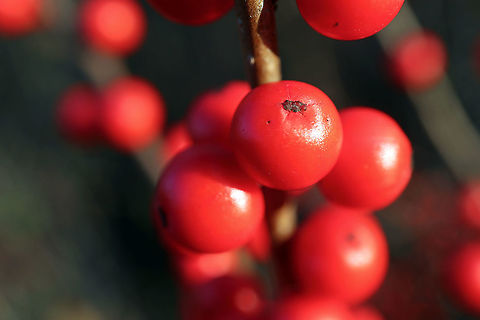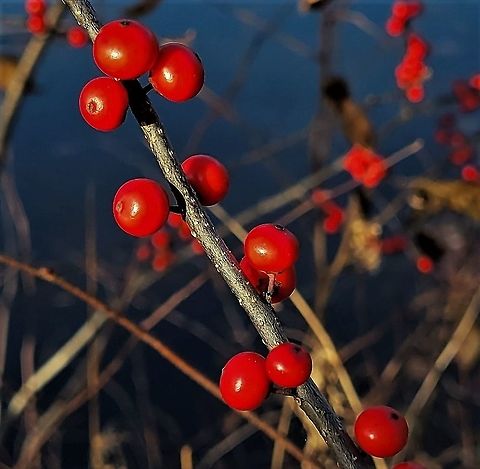
Appearance
"Ilex verticillata" is a shrub growing to 1–5 m tall. It is one of a number of hollies which are deciduous, losing their leaves in the fall. In wet sites, it will spread to form a dense thicket, while in dry soil it remains a tight shrub. The leaves are glossy green, 3.5–9 cm long, 1.5–3.5 cm broad, with a serrated margin and an acute apex. The flowers are small, 5 mm in diameter, with five to eight white petals.The fruit is a globose red drupe 6–8 mm in diameter, which often persists on the branches long into the winter, giving the plant its English name. Like most hollies, it is dioecious, with separate male and female plants; the proximity of at least one male plant is required to pollenize the females in order to bear fruit.

Naming
Other names that have been used include black alder, Canada holly, coralberry, fever bush, Michigan holly, or winterberry holly.
Habitat
The species occurs particularly in wetland habitats, but also on dry sand dunes and grassland. The berries are an important food resource for some species of bird, among them the American robin.References:
Some text fragments are auto parsed from Wikipedia.